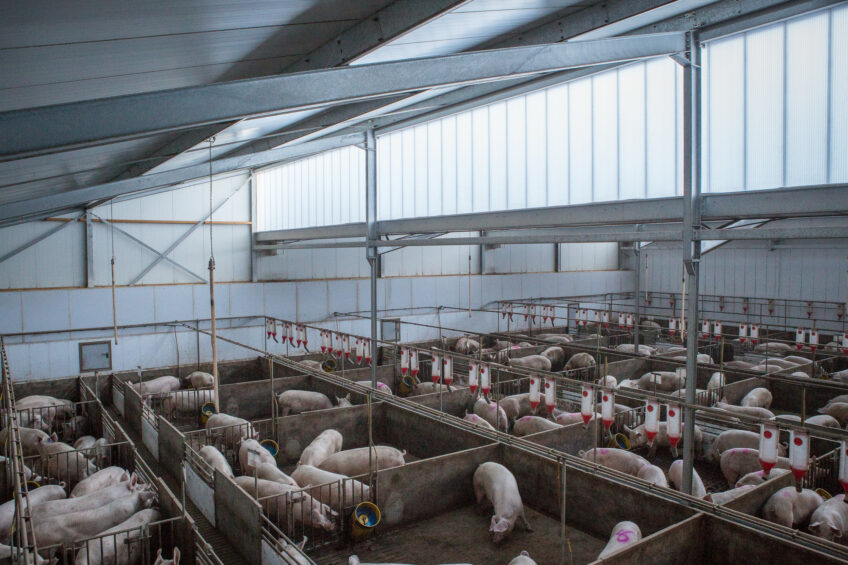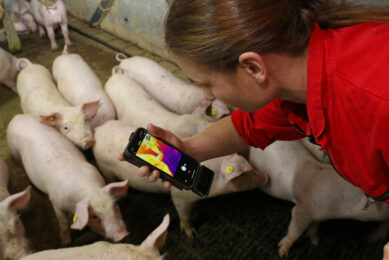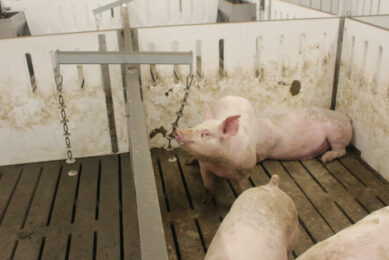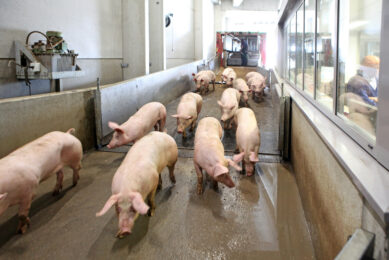Light: Intensity and time matter for pig welfare

When considering indoor housing improvements for pigs and cattle, there ought to be more attention for the intensity and time animals are exposed to light and dark. That attention would be needed to secure the animals’ welfare.
That was the conclusion of a recent scientific review article that was published in the peer-reviewed journal Frontiers in Animal Science, in January 2025. The article was composed by researchers from various universities and institutes in Germany, Sweden and France.
Impact of light on farm animals
The team of researchers wanted to gain a better understanding of the impact of light on farm animals. That is crucial for the design of appropriate, high-welfare housing and management conditions. They wrote: “By considering the animal’s visual needs and adaptive capabilities, future housing and management can allow them to better express their natural behaviour.” Yet, often, decisions used to be made onto what was useful or pleasant for humans rather than for the inhabitants of the farm buildings.
The research article focused on “farmed ungulates,” like pigs, cattle, horses, sheep and goats – and looked at 3 specific light parameters:
- Photoperiod, or “the relative length the animal is exposed to light and dark in 24 hours,”
- Illumination, or the “measure of the incident light an animal is exposed to;” and
- Colour.
Many trials to pigs and illumination
Secondly, the team also tried to identify gaps of knowledge and pointed out implications for animal welfare and potential improvement of current animal husbandry environments. There team found that there was considerable variation in the number of studies by species and light parameters. A large focus of studies looked at illumination in pigs and colour perception in horses, they said, but research on cattle, sheep and goats, seems to have been underrepresented in the literature.
In relation to photoperiodicity, the team mentions that earlier studies observed that the time pigs are exposed to light plays an important role in relation to feed intake, sexual maturity and resting behaviour, to name a few. Also tail biting was reported to be part of the equation. Not all scientific studies, however, appeared to have yielded a similar conclusion and lighting time preferences could be dependent on age and type of the pig. Having said that, the team wrote, “The results indicate that pigs exposed to longer lighting periods attained a higher degree of welfare.”
Overestimating the importance of colour
The team also wrote, “From a human perspective, there is a tendency to overestimate the importance of colour perception and preference, whereas contrast discrimination in combination with illumination intensity and quality seems to be more relevant for ungulate orientation and interaction with their environment.”
The researchers concluded, “Aside from the importance of other senses and their interaction with vision, the research team concluded that illumination and photoperiodicity seem to be most relevant for securing the welfare of farm ungulates. These aspects should therefore be given more consideration in indoor housing improvements.”
The scientific team calls for further research. They wrote, “Future research emphasis should be given to preference testing studies, as they provide insights into the animals’ motivation for specific light conditions that may further improve their welfare, but also health and performance.”











